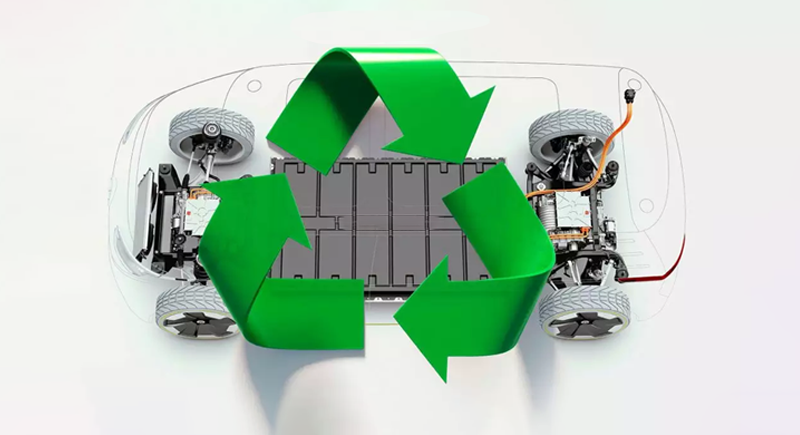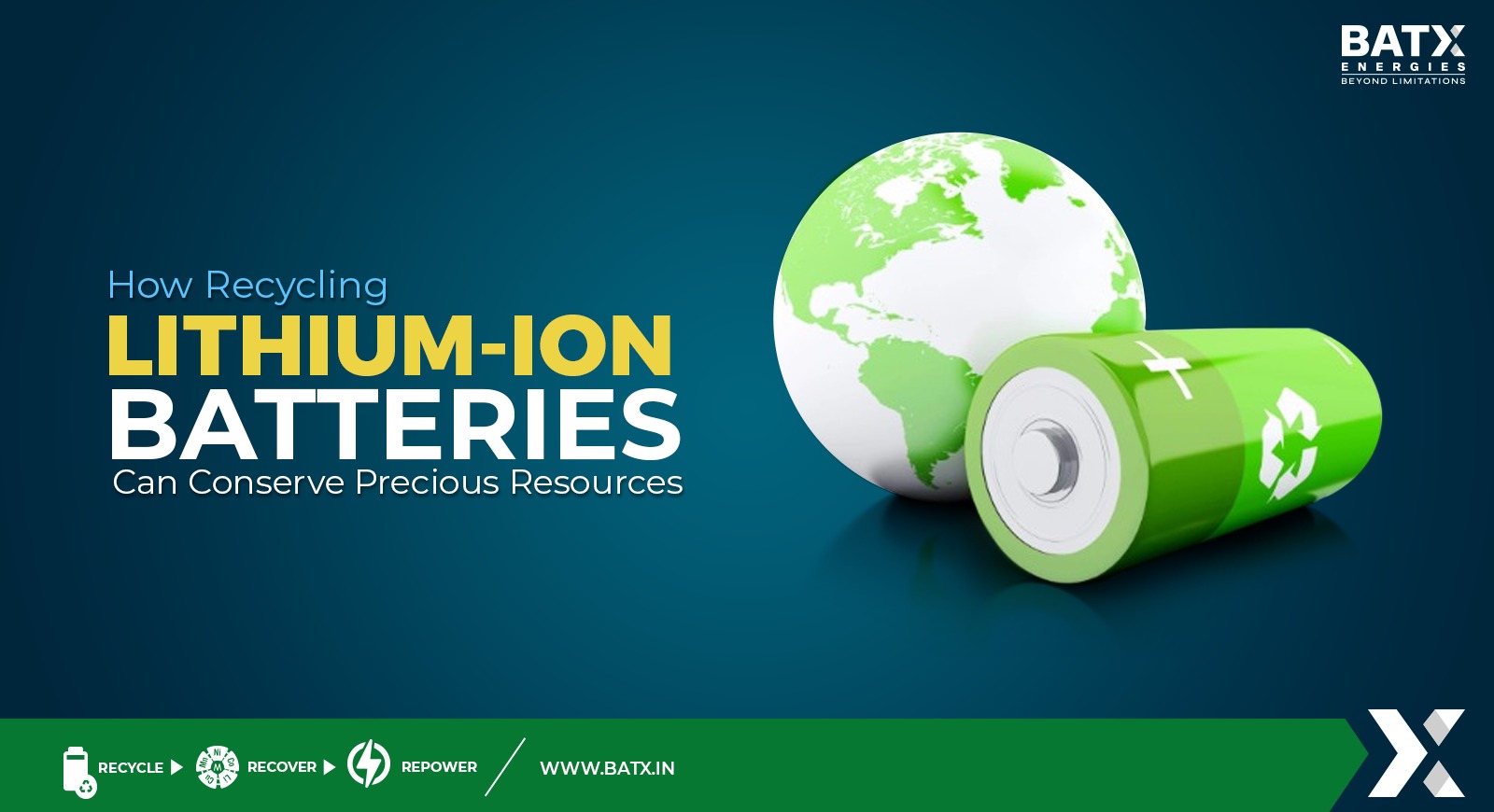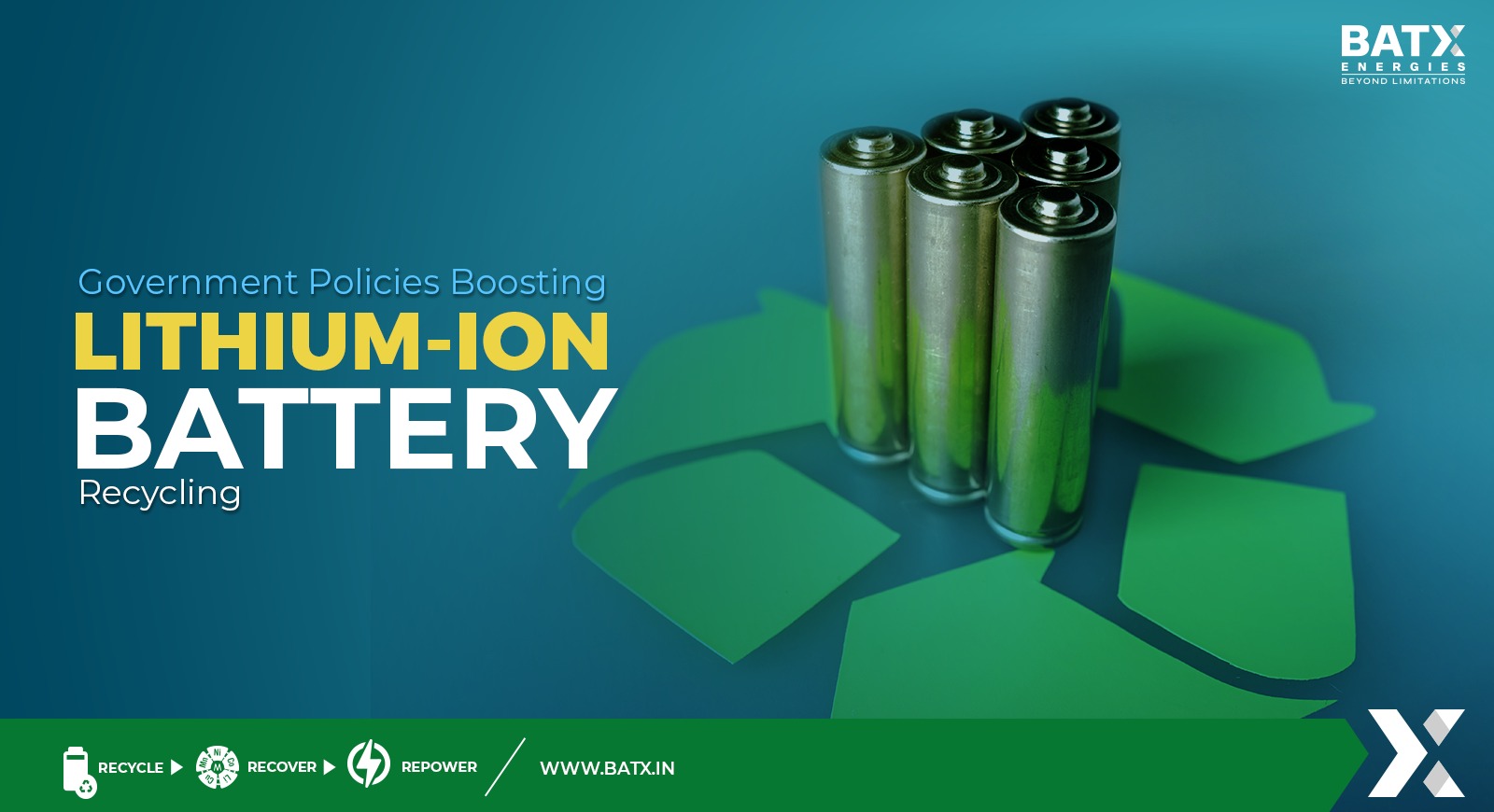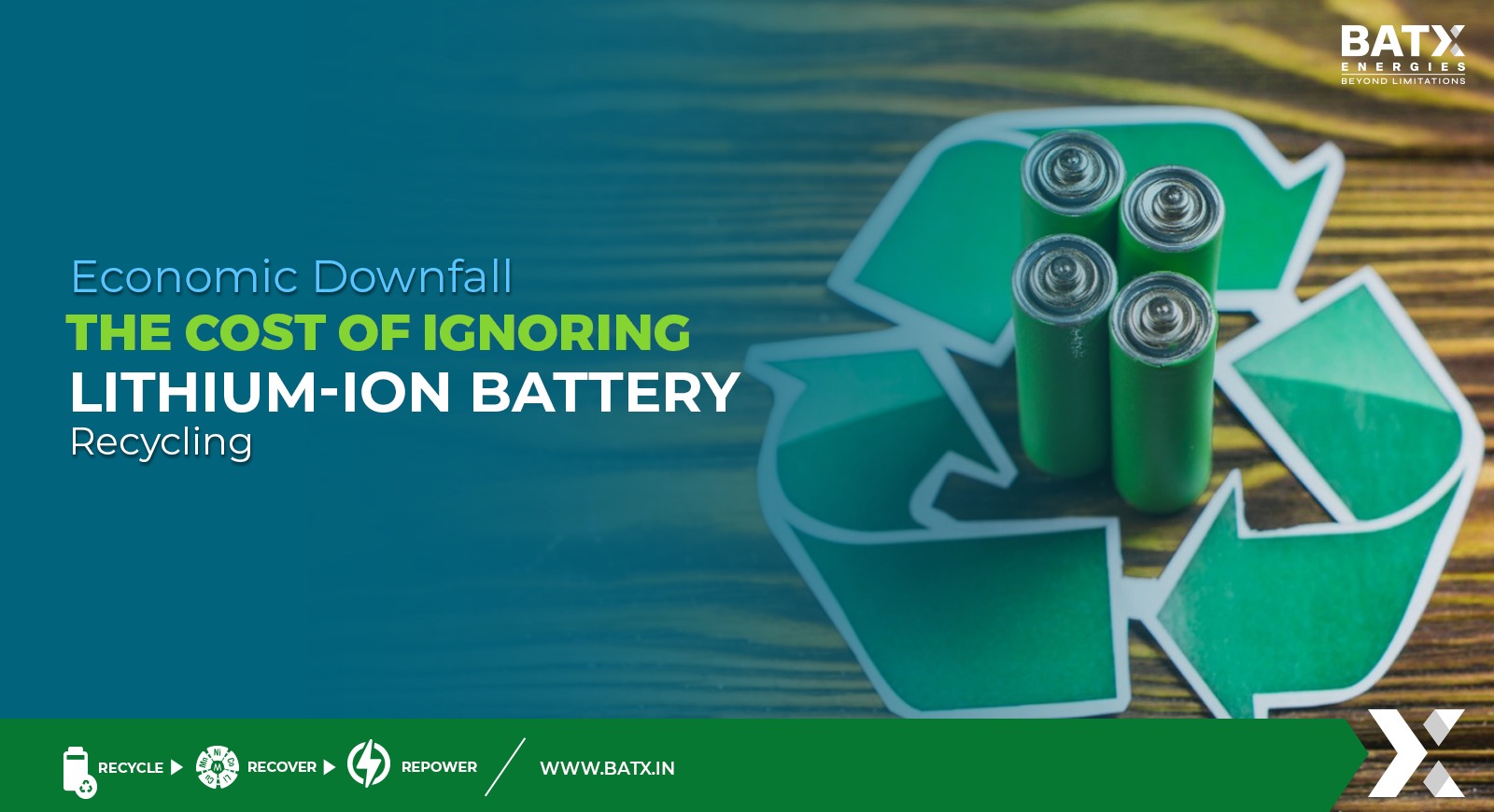In India, the need for batteries will rise dramatically in the upcoming years as India is committed to switching from fossil fuel-based to electric vehicles (EVs). The lithium-ion battery is currently the best choice among the numerous battery technologies.
Although Li-ion batteries come in a wide variety, lithium nickel, manganese cobalt and iron phosphate batteries are used to power the bulk of electric vehicles. These batteries have an approximate eight to ten-year shelf life, but once the energy production capacity falls below 80%, they are no longer suitable for EVs. These batteries can still be utilised in stationary applications and for storing renewable energy (RE).
An electric vehicle battery recycling circular economy will benefit domestic electric vehicle and storage industries. Lithium-ion batteries were reportedly accessible for recycling in India in 2020 in amounts of about 0.4 GWh. By 2030, it is anticipated that the total volume of end-of-life lithium-ion batteries (straight from EVs and after second-use applications) will be roughly 70 GWh. 90% of them are recoverable with the proper recycling procedure.
Valuable metals including cobalt, nickel, manganese, lithium, graphite, and aluminium can be recovered up to 90% using the current recycling processes. Approximately 50-60% of a battery’s price is attributed to these components, with cobalt being the most expensive.
However, India currently lacks a system for commercial-scale recycling. Batteries that have reached their end of life are stockpiled and carelessly disposed of in landfills. Hazardous substances like lithium, nickel, and cobalt are found in LIBs, and lithium spontaneously reacts with moisture to produce explosions. These pollutants can also be harmful to human health.
At this time, mechanical process (physical separation of components), pyro-metallurgical (heat treatment), and hydro-metallurgy are the commercially feasible recycling processes (chemical treatment). The least energy-intensive and most efficient of these is hydro-metallurgical (95% recovery).
Globally, electric vehicle battery recycling is a well-established industry. About 100,000 metric tons of Li-ion batteries were recycled in 2019 out of 180,000 tons available. Countries like the USA, China, Japan, and others have implemented particular legislative and regulatory measures to promote commercial scalability after realising the enormous potential of the LiB industry and its benefits for recycling.
What Are the Steps Taken by the Indian Government to Encourage Battery Recycling?
To prevent improper handling and management of Lithium-ion batteries, the Government of India has released draught guidelines on handling battery waste. These recommendations seek to impose extended producer responsibility (EPR), which would require producers to be in charge of collecting, storing, transporting, recycling, and disposing of spent batteries. Additionally, the government suggests financial rewards to encourage investments in LiB recycling.
Several measures have been implemented by the Indian government in recent years to create an environment conducive to the growth of electric vehicles. The government ensured a long-term boost for the EV industry through the Faster Adoption and Manufacturing of Hybrid and Electric Vehicles (FAME-I and II) initiatives. However, it is also understood that the local battery cell manufacturing industry could help to adopt a new eco-friendly environment.
With a significant commitment of Rs 75,000 Cr for Advance Chemistry Cell (ACC) Batteries and Automobiles & Auto Components, the Government of India gave the battery manufacturing industry the largest share of the PLI scheme outlay. In May 2021, the government also authorised a PLI plan for the battery industry called “National Program on Advance Chemistry Cells (ACC) battery storage”, with a budget of Rs 18,100 crore.
The government aimed to produce 50 GigaWatt Hours of ACC to reduce the high import costs. These are critical steps taken by the Indian government to make the battery supply chain more convenient for manufacturers.
Conclusion
In India, the infrastructure for collecting, storing, and recycling Lithium-ion battery waste currently has a technology deficit. End-of-life li-ion batteries must be handled, stored, transported, treated, recycled, and disposed of according to laws and regulations that have not yet been enacted or given to the EV battery recycling companies. To deploy EV batteries on a broad scale in stationary applications like renewable energy and others efficiently, standards for second-use uses of old EV batteries are also required.
The domestic EV and storage sector will benefit from a Lithium-ion circular economy. By 2030, the production of 60 GWh of Li-ion cells in India could be supported by recycled materials from defunct batteries. This can reduce India’s reliance on imports, open new markets for Li-cell producers, and help the government’s AatmaNirbhar Bharat goal. According to a study, recycled materials can reduce CO2 emissions by as much as 90%.
Several companies have already started recycling lithium-ion batteries on a small basis, and BatX Energies is one of them. We have implemented our patent recycling method with a 90% material recovery rate. Recovered materials have a purity level of up to 99% and are acceptable for use in producing new batteries.



